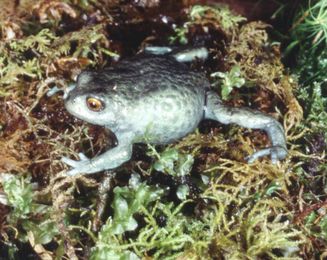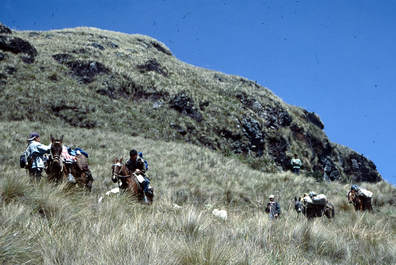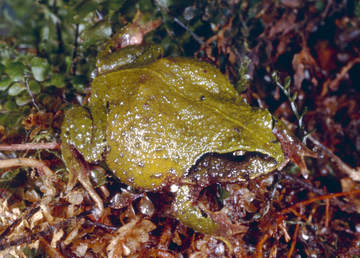
forest, wet montane grasslands, and puna, as well as archaeological sites such as the Gran Pajatén, all of which forms the Gran Pajatén Peruvian Biosphere Reserve. Shown here is Phrynopus anancites from the southern border of the park at Ventanas.


 We collaborated with Dr. Lily Rodriguez for another exciting discovery from the eastern slopes of the Andes, four new species of Phrynopus from Abiseo National Park in northern Peru. This park protects the entire watershed of the Abiseo river, containing many ecosystems such as cloud and elfin forest, wet montane grasslands, and puna, as well as archaeological sites such as the Gran Pajatén, all of which forms the Gran Pajatén Peruvian Biosphere Reserve. Shown here is Phrynopus anancites from the southern border of the park at Ventanas.  The new species were discovered during several expeditions organized by APECO starting in the late 1980s, 1990s and early 2000s. The photograph to the right shows one of these expeditions, in July 2000, as a group of researchers descends from the last mountain pass into the upper watershed of the Montecristo river. These grasslands at Pampas del Cuy are inhabited by one of the new species, Phrynopus dumicola.  Three of the four new species are restricted to grassland and elfin forest habitats, but the fourth species Phrynopus personatus shown here lives in the leaf litter of the cloud forest in a narrow elevational range around 3000 m elevation. These forests are also home to the endemic yellow-tailed woolly monkey, a critically endangered species of monkey. With the addition of the four new species, the genus Phrynopus, which is endemic to Peru, now includes 32 species.
0 Comments
Leave a Reply. |
Archives
June 2024
CATENAZZI LABNews from the lab Categories |